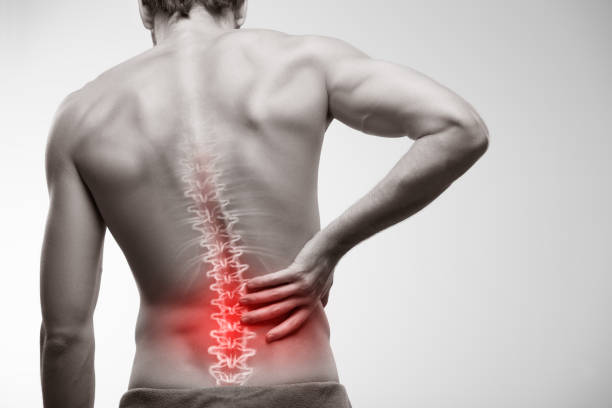
How many times have you woken up with a dull ache in your lower back? You might have slept well, but the pain lingers, leaving you wondering why. You start to think about whether you’ve done something wrong, like exercising incorrectly, or maybe your sleeping position was off. After pondering over various reasons, you still can’t pinpoint exactly what’s causing your low back pain which can be frustrating. But don’t worry—this blog will help you understand the real low back pain causes and provide solutions that go beyond simple assumptions.
Most people will have low back discomfort at some point in their lives. It’s among the most frequent justifications for seeking medical care, missing work, or seeing doctors. Yet, despite its prevalence, many of us are still uncertain about its exact causes. Often, we attribute it to things like bad posture, a wrong sleeping position, or overexertion, but low back pain can have various underlying causes that require a deeper understanding. By diving into what low back pain really is and what causes it, we can make better choices for our health and take more effective steps toward treatment.
So What is Low Back Pain — EXACTLY?
As the name implies, low back pain is any discomfort or pain that arises in the lower back, usually above the knees and beneath the ribs. Yes now you know exactly where it hurts. And soon you will know exactly why it hurts! So, the spine is a complex structure made up of bones, discs, nerves, muscles, and ligaments. When any of these components are injured, irritated, or stressed, it can lead to low back pain.
Low Back Pain Causes
There are several potential causes of low back pain, ranging from lifestyle factors to more serious medical conditions. Some common causes include:
Muscle or Ligament Strain
Lower back discomfort and stiffness can result from straining the muscles and ligaments caused by abrupt movements or heavy lifting. One of the most common reasons for low back discomfort is this.
Herniated Discs
The spine’s discs serve as cushions between the vertebrae. A disc can press on surrounding nerves and cause excruciating pain if it bursts or bulges out of its natural position.
Degenerative Disc Disease
As we age, the discs in the spine can start to break down, leading to less cushioning and more friction between the vertebrae.
Sciatica
Sciatica is caused by compression or irritation of the sciatic nerve, which travels from the lower back down the hips and down the legs. Sharp, shooting pain may result from this, radiating down to the leg from the back.
Spinal Stenosis
This disorder develops when the spinal cord and nerves are compressed by narrowing gaps inside the spine. It may result in lower back pain, weakness, and numbness.
Poor Posture
Of course. Poor posture can cause discomfort over time by putting tension on the lower back’s muscles and ligaments. Long periods of sitting or standing with poor alignment might be a major factor.
Injury or Trauma
Accidents, falls, or sports injuries can damage the spine or its components, resulting in lower back pain.
Osteoarthritis
The spine’s joints may be impacted by arthritis, which can result in discomfort and inflammation.
These are but a handful of the numerous possible reasons why people have low back pain. Often, people might assume that something as simple as poor posture or a bad sleeping position is the culprit, but the reality is that low back pain can have a more complex origin. Understanding the root cause is essential to effective treatment and relief.
Getting Relief from Low Back Pain
For many individuals suffering from low back pain, relief may seem out of reach. However, various low back pain treatment options are available, depending on the underlying cause. Simple measures like rest, ice, and over-the-counter pain relievers can help with mild discomfort, but more serious cases may require further intervention. Normal physical therapy can be effective in treating low back pain when the cause is not too serious. Medications, such as muscle relaxers, can also help by relaxing muscles and eliminating pain. However, once the root cause is identified, administering the right medication becomes much easier and more effective.
Massage therapy and injections are also effective low back pain treatment options. When the pain is caused by an accident or trauma, surgery may often be the only solution. To determine if the pain is due to an underlying issue like a genetic condition or a temporary cause, medical tests such as bone scans, blood tests, DNA tests, genetic testing, and even cell scans can offer valuable insights into the root cause of your low back pain.
After getting results from the test you can finally get the right doctor and get the not just right but a permanent low back pain treatment. In some cases, more advanced treatments such as spinal injections, chiropractic adjustments, or even surgery may be necessary. Now, at advanced clinics, such as the anti-ageing centre in India, you can access these sophisticated tests as part of their longevity programme and also get the tailored low back pain treatment. This programme not only helps identify the root cause of your low back pain but also provides tailored treatment plans based on the test results.
Conclusion
Low back pain can be a perplexing issue to deal with, especially when the cause is unclear. While many people assume it’s due to bad posture or a poor sleeping position, it’s essential to understand that low back pain can have a variety of causes. Whether it’s muscle strain, a herniated disc, or even a genetic condition, the only way to know for sure is through proper medical testing. If you’re dealing with ongoing low back pain, don’t delay seeking help. Seek out professional medical advice, and get the tests that can truly reveal what’s happening inside your body. You deserve to live without pain, and with the right care and attention, you can achieve lasting relief.
